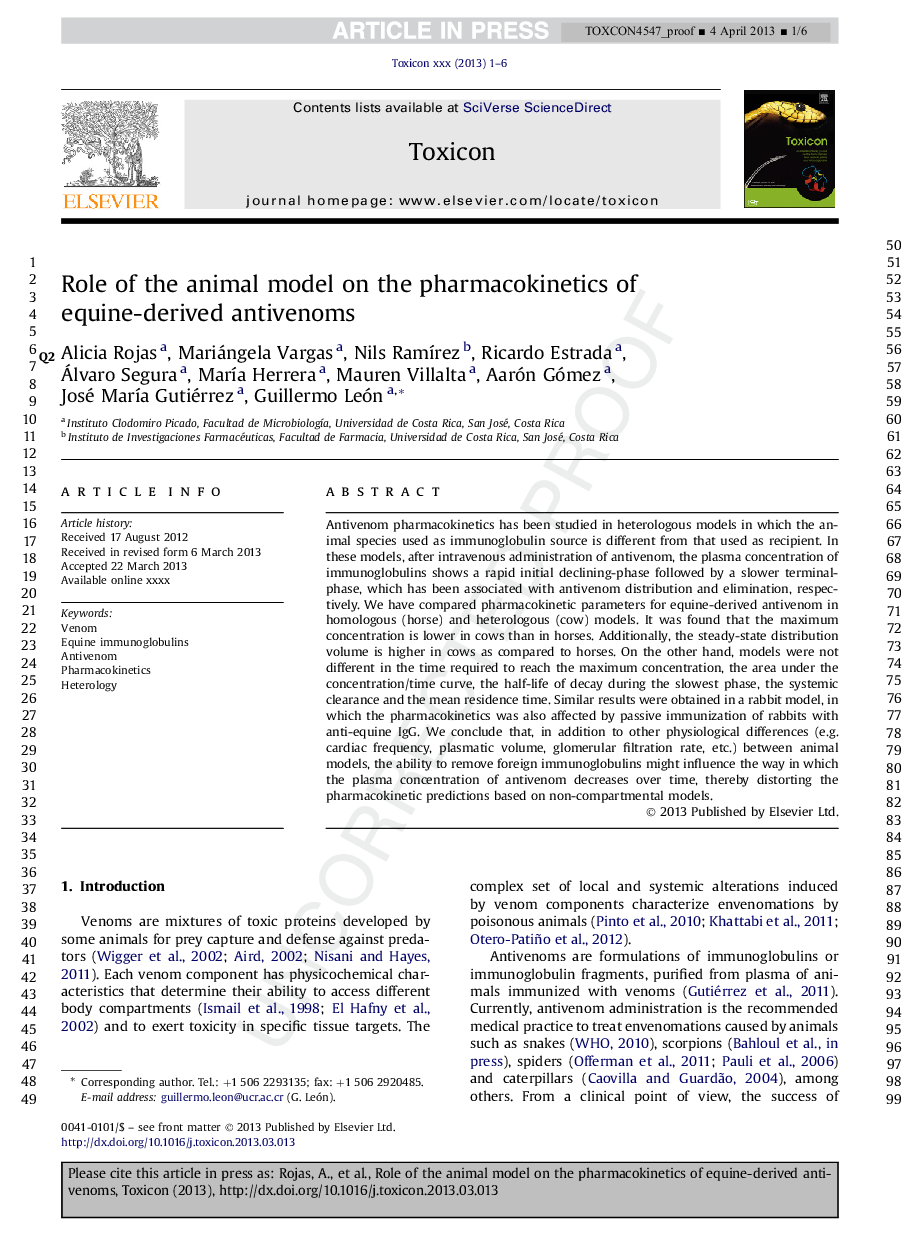| کد مقاله | کد نشریه | سال انتشار | مقاله انگلیسی | نسخه تمام متن |
|---|---|---|---|---|
| 8397590 | 1544165 | 2013 | 6 صفحه PDF | دانلود رایگان |
عنوان انگلیسی مقاله ISI
Role of the animal model on the pharmacokinetics of equine-derived antivenoms
ترجمه فارسی عنوان
نقش مدل حیوانی بر روی فارماکوکینتیک آنتی بادی های مشتق شده از اسب
دانلود مقاله + سفارش ترجمه
دانلود مقاله ISI انگلیسی
رایگان برای ایرانیان
کلمات کلیدی
موضوعات مرتبط
علوم زیستی و بیوفناوری
بیوشیمی، ژنتیک و زیست شناسی مولکولی
بیوشیمی، ژنتیک و زیست شناسی مولکولی (عمومی)
چکیده انگلیسی
Antivenom pharmacokinetics has been studied in heterologous models in which the animal species used as immunoglobulin source is different from that used as recipient. In these models, after intravenous administration of antivenom, the plasma concentration of immunoglobulins shows a rapid initial declining-phase followed by a slower terminal-phase, which has been associated with antivenom distribution and elimination, respectively. We have compared pharmacokinetic parameters for equine-derived antivenom in homologous (horse) and heterologous (cow) models. It was found that the maximum concentration is lower in cows than in horses. Additionally, the steady-state distribution volume is higher in cows as compared to horses. On the other hand, models were not different in the time required to reach the maximum concentration, the area under the concentration/time curve, the half-life of decay during the slowest phase, the systemic clearance and the mean residence time. Similar results were obtained in a rabbit model, in which the pharmacokinetics was also affected by passive immunization of rabbits with anti-equine IgG. We conclude that, in addition to other physiological differences (e.g. cardiac frequency, plasmatic volume, glomerular filtration rate, etc.) between animal models, the ability to remove foreign immunoglobulins might influence the way in which the plasma concentration of antivenom decreases over time, thereby distorting the pharmacokinetic predictions based on non-compartmental models.
ناشر
Database: Elsevier - ScienceDirect (ساینس دایرکت)
Journal: Toxicon - Volume 70, August 2013, Pages 9-14
Journal: Toxicon - Volume 70, August 2013, Pages 9-14
نویسندگان
Alicia Rojas, Mariángela Vargas, Nils RamÃrez, Ricardo Estrada, Álvaro Segura, MarÃa Herrera, Mauren Villalta, Aarón Gómez, José MarÃa Gutiérrez, Guillermo León,
